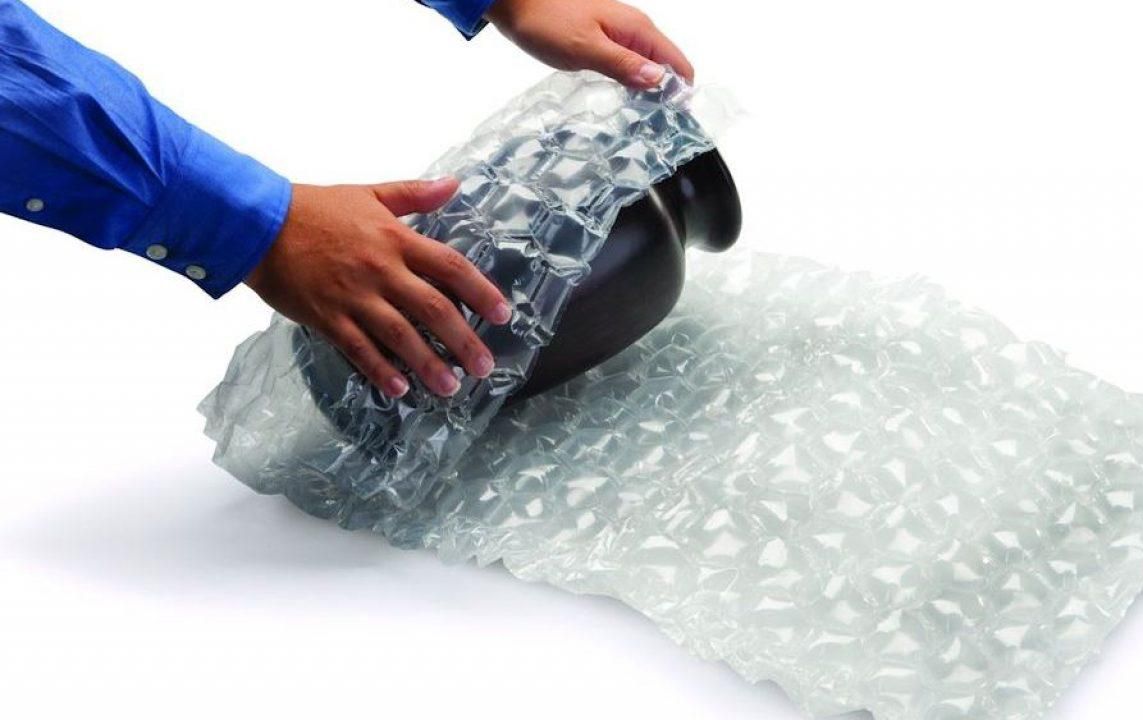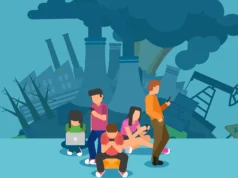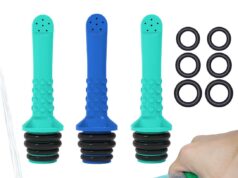When it comes to the environment, one should be very cautious about the kind of products they use, to make sure they are eco-friendly. As a human being, one of the most important things that you can do to the world is to take care of the environment. Bubble wrap is a packaging method that has been in the market for a long time. Its main use is in the packaging of products and prevents them from breaking. The packaging material was mostly preferred by people due to its transparency and cushioning.
Bubble wrap is made from plastic materials that are not biodegradable and have adverse effects on the environment. As people have now become more concerned with the situation, various alternatives to bubble wrap have come up. When choosing a packaging material, you should make sure that it protects the products and they are eco-friendly. Currently, global warming is on the rise, and the most affected species are the aquatic animals. Our water bodies are mostly affected by non-biodegradable wraps. Read on to find out the best eco-friendly alternatives to bubble wrap.
1. Cornstarch
Cornstarch tops our list for the best eco-friendly alternative to bubble wrap. Cornstarch has become popular among many people and industries around the world today as they try to look for other options for plastics. There are many benefits associated with cornstarch, and this has led to an increase in its demand. It is an excellent eco-friendly alternative to bubble wrap. It is organic and biodegradable. Cornstarch is made from the maize plants thereby has no effects on the environment. It can be used instead of plastics as it has plastic-like features. Cornstarch can be used as a form of packaging for various products. It protects the products, and it is ideal when shipping products to long distances. One of the advantages of using cornstarch is that it is safe for packaging food items. If you are looking for a packaging material that is cheap and easy to get, you should consider cornstarch. Besides, producing this type of bags produces fewer greenhouse emissions than other conventional packaging materials. Also, the cornstarch does not contain any toxin; thus it is safe to use.
2. Paper and cardboard
Paper and cardboard are good alternatives to bubble wrap. They are eco-friendly, recyclable and reusable. Paper and cardboard are readily and cheaply available in the market, and most people can afford. Nowadays, most industries are using recycled paper for most of their packaging as it is safe and protects the products. Most of the manufacturing companies, that use paper and cardboard collect and recycle them, which is an excellent way of conserving the environment. The production of the paper and cardboard is safe and does not affect the environment as there are no harmful chemicals used or gases that are emitted. You can use cardboard to protect items when carrying or shipping. Papers are mostly used as packaging materials and wrapping items that are not breakable.
A great alternative to cornstarch is Seaweed Packaging from mushroom to seaweed, many applications already use the gelatinous substance agar that is mostly on algae and seaweed. The packaging is mostly used in eh food industry. In this sector, it is utilized as a thickener or as an alternative to gelatin. Additionally, a team of designers has won a tender to complete the prototype to be used in packaging. Being made from the most plentiful raw material, this could be the next big packaging utility ever used as an eco-friendly alternative.
3. Biodegradable air peanuts
Biodegradable air peanuts offer a good way of packaging loose-fill products and shipping cartons. They are light and breathable making it ideal for packaging. They are made from biodegradable materials and therefore do not affect the environment. When the peanuts decompose they turn into an organic matter that can be used for other functions. Biodegradable air peanuts are cost-effective and can be used for small industries with low budgets on packaging materials. You can use biodegradable peanuts at home to fill in spaces as you pack your products on boxes. Some people may think that since peanuts are used for human consumption, their use in packaging can affect the supply. In this case, you should note that biodegradable peanuts are reusable for as many times as possible hence they are not a threat to the supply for consumption.
4. Air pillows
Air pillows are another alternative to bubble wrap. Inflatable air pillows are ideal for providing cushioning and filling the void in boxes and cartons. They are most used by manufacturing companies to package fragile products. Today, there are many different types of air pillows to choose from, and they come in different sizes. When buying, they come in the form of small bags, and you need to inflate them before use. The air pillows are made from biodegradable materials and can be recycled and reused. They are cheap to use compared to other packaging materials, and their production does not affect the environment. When shipping products using air pillows, they offer the best protection for your products. When purchasing air pillows, it is important to verify that they are made from biodegradable materials.
5. Biodegradable plastic
One of the mostly used bubbles wraps alternative is biodegradable plastics. The biodegradable plastics have many uses, and many manufacturers have come up to curb the demand. Biodegradable plastic starts to decompose after it has been exposed to sunlight. Most of the biodegradable plastics will last for two years, before decomposing. They are a good alternative to people who are used to traditional plastics. The biodegradable plastic is ideal for all types of products especially if you want to protect your products against water. The production of biodegradable plastic can be quite expensive as several chemicals are added to make the plastic decompose easily. They are ideal for large manufacturing industries that are willing to invest heavily on this bubble wrap alternative. Before you purchase the biodegradable plastics, ensure you get from a licensed vendor to be a hundred percent sure that it will decompose after a while.
6. Mushroom packaging
Mushroom is an eco-friendly alternative for packaging small items, and according to Titoma, it even works to package electronics. The materials are made from mushrooms which makes it a good method of conserving the environment. The mushroom packaging is made from mushroom roots which are cleaned and dried.
They can be fused with other agricultural waste such as cotton, or you can use the roots only to make your packaging. The mushroom packaging is known to degrade after a very short time making it ideal for shipping products around the local area. The production of the mushroom packaging material does not emit harmful gases to the environment as it only requires drying before use. The main advantage of using mushroom packaging is that it can be composted easily at home.
7. Seaweed packaging
Seaweed has been proven to be one of the top alternatives to bubble wrap. It is mostly used in packaging food items as it is considered safe to use. Seaweed packaging is gaining popularity slowly in the market, and it is estimated that it will be the next big thing from bubble wrap. There are many advantages of using seaweed packaging such as it is readily available, cheap production costs and it easily degrades after use. Seaweed packaging makes sure that products reach the destination while they are intact.
8. Newspapers
Your daily newspapers can be used instead of bubble wrap. They are a very cheap method of packaging as you do not need to buy newspapers. Most people find it difficult to store newspapers in the house or office after they are done reading the news. Instead of throwing away the newspapers, they can be shredded into small strips and be used to wrap items on boxes when shipping or traveling. Newspapers are a good way of packaging as they are usable as many times as you can. When they are wrapped properly, they offer an excellent cushioning of fragile products. Therefore, if you have newspapers at home, make use of them before they are recycled and they will save you quite a lot of money. If you do not have enough newspapers for bulk packaging, you can borrow from friends and neighbors who will give freely to you.
9. Magazines
Magazines can be used to separate fragile products in a box. They are made in the same way as newspapers by shredding them into small pieces. They are a cheap method of packaging, and you can use them at home. Magazines are made from biodegradable materials, and they decompose very fast. In this, you do not only conserve the environment but also save on costs. If you have a lot of magazines at home or in the office, you can use them when packaging your fragile products. Magazines can occupy a lot of space and using them for packaging is a great and noble idea. To make magazine packaging look neat on the boxes, make sure that you shred them equal sizes and fold them in an orderly manner so that they can fit well in the spaces available.
10. Bagasse
Bagasse is an eco-friendly product made from sugar production. Sugar is extracted from the natural sugarcane plants; hence they do not pose any harm to the environment. It is mostly used as a packaging material on its own, or it can be combined with other products such as cotton. Bagasse is cheap, and one can get it from the sugar-producing companies, and there are no other processes needed to make this packaging material. It can be used when packaging products on boxes, and it decomposes very easily. It is also reusable, and one can use it at least twice or thrice before it decomposes. Also, bagasse packaging material has no toxin; thus it is safe to use without any concern on human health.
11. Palm fiber
Palm fiber has very many uses, and packaging is one of them. Palm fiber is very soft and can be used for packaging of fragile products to avoid breakage. The bubble wrap alternative has been in use for many years, but it gained popularity in the last few years. Palm fiber is also ideal when shipping products to long distances. The fiber offers comfortable packaging to shipping items due to its unique design. You can never get it wrong with palm fiber when you package your items with it. Additionally, Palm fiber is extracted from the palm tree, and it is them dried and made into a packaging material. Its production does not affect the environment as there are no chemicals used to make it. It is a cheap and eco-friendly alternative to bubble wrap as it decomposes into organic matter. They are easily accessible from the market at low prices. Palm fibers are used for small scale packaging.
12. Glass
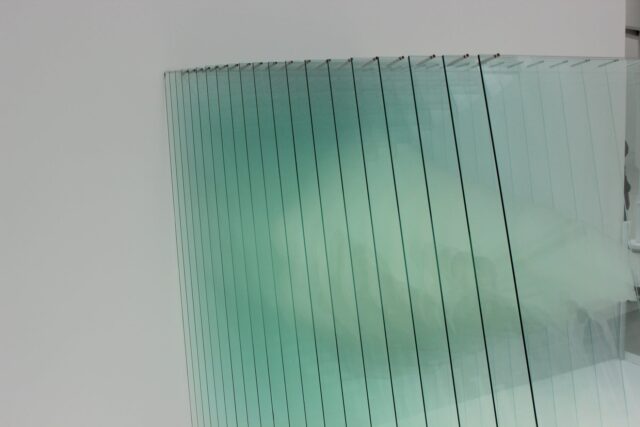
The glass is a good option instead of using bubble wrap. Glass can be used for different packaging products such as food and drinks. It can be used to protect very fragile items when shipping to long distances. Glass is clean and can be reused and recycled; therefore it does not pollute the environment. When it comes to glass, you should make sure you choose the strongest so that it does not break easily. Glass is expensive when buying, but it will protect your products. It is transparent and lasts for a long time. Glass is waterproof, and it will protect your products from water, and it can be used for products that go bad easily or those that can be destroyed by water. Glass is always ideal when packaging liquid products. Also, glass is renewable and does not pollute the environment.
13. Office paper waste
In most workplaces, there are a lot of waste papers that are thrown away into the dustbin. The paper waste can be transformed into a good eco-friendly alternative for bubble wrap in a very short time. All you require is a paper shredder, and you cut the paper waste into neat stripes. The shredded office paper waste can be used when packaging items on boxes or for separating different items. They offer cushioning and close spaces in the boxes. The office paper waste can be used over and over again. Therefore, if you are looking for a good way of packaging things in your office, make sure that you take all the paper waste in the bin and make them into useful products. When using office paper waste, it is important that you look at the documents to make sure there is no confidential information on those papers. Waste papers can act as a good alternative for cushioning in any packaging environment.
14. Old clothes
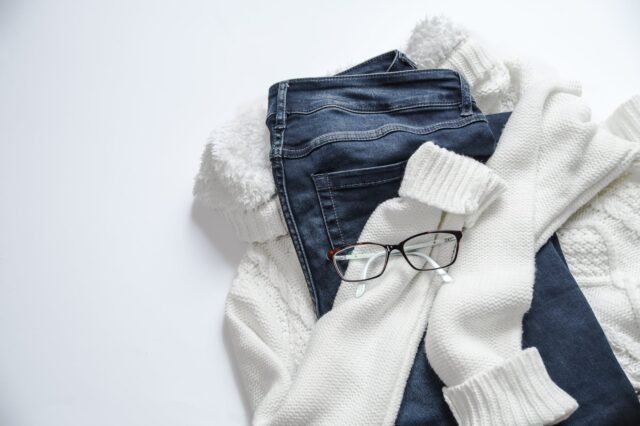
Old clothes are a good eco-friendly alternative to bubble wrap that most people do not know about. Old clothes can be used to fill spaces in a box to protect any breakable products. They can be ideal for long-distance shipping. To use old clothes in packaging, you should cut them into small pieces that will fit well in the box spaces. If you have clothes that you do not wear anymore, you should use them when packaging breakable items in cartons. When using old clothes an alternative to bubble wrap, you do not incur any costs associated with production or packaging. They are safe to use on the environment as they are reusable and biodegradable.
If you want to save the environment, you should consider the above environmental friendly alternatives to bubble wraps. One of the major factors that destroy the environment is plastics. Most companies nowadays have stopped using plastic-based products including bubble wrap to save the environment. In some states, the use of plastics has been banned completely, and people are looking for alternative ways of packaging as listed above. When choosing an eco-friendly alternative to bubble wrap, you should consider some factors such as; if it is biodegradable, how long it takes to decompose, if it can be recycled, reusability and the production of the product. Other factors include cost, benefits, and uses.
Conclusion
Most of the above alternatives are now available in the local stores while others you can purchase online. Some of the above mentioned are DIY, and you make them conveniently at home or in the office. If you want to pack items for traveling, shipping items from one place to another or you are looking for packaging materials you should consider eco-friendly products. The bubble wrap alternatives mentioned above will not only save the environment but also save on costs. Saving the environment will give you peace of mind, help you live a healthy life, create a climate conducive to animals and save costs.

